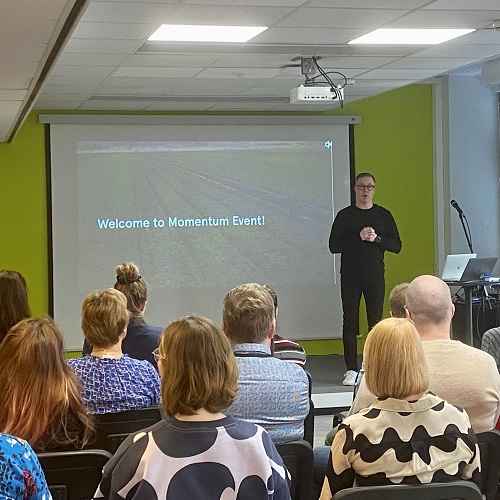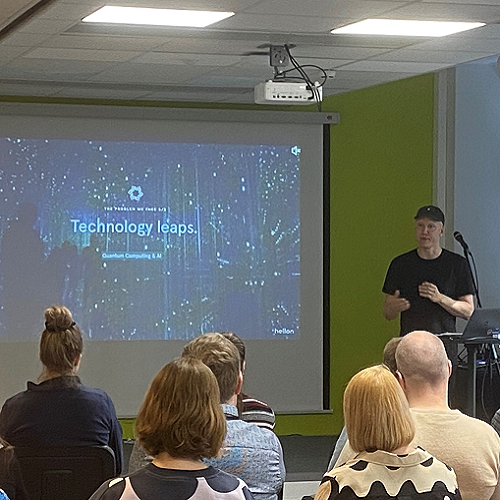How can designers across the ICT sector work alongside AI to create world class products and solutions for their clients? What should companies be doing to put themselves in a good position to solve problems in an increasingly unpredictable environment?
We were delighted to attend Hellon’s recent event at BusinessAsema on 27th April called Momentum, exploring how businesses can innovate with AI design methods. They are quite an authoritative and pioneering voice on the subject, as they have included elements of machine learning in their projects for several years now. Just recently, their work was recognised at Fast Company’s 2022 Innovation by Design Awards
Over the course of two-and-a-half hours, they shared lots of valuable insights, and we thought we would include some of our own takeaways from their presentations.


The Current Challenges Businesses Face
It’s important to consider the environment we operate in. At this time, we are living in a climate that is becoming more uncertain and volatile. Additionally, as the world gets more connected, the problems that businesses face become more complex. The technological capabilities of AI, which are getting stronger with each passing week, can play a part in meeting these challenges.
A New Approach to Problem Solving
Taking into account all the challenges that we are being presented with, it’s conceivable that we need to realign how we think regarding our ability to find solutions to problems that clients face. Proactive strategies and organisational flexibility puts companies in the best possible position to build new value streams. Furthermore, clarity of vision will lead to the rapid and transformative execution of projects.
The Road to a Strong AI Strategy
One of the things that became apparent when Hellon described their own internal journey of AI implementation was that their strategy was carefully thought out with plenty of attention-to-detail. For businesses looking to incorporate their own processes with the new technology available to them, there are a lot of steps to consider like data science entry, R&D, philosophy changes and so on.
A Workflow Tool, But Not the Whole Workflow
For all of the potential that AI tools offer, we shouldn’t look at the technology as a full replacement for an entire workflow. If you take something like ChatGPT, for instance, you can use it to identify and organise relevant information in simple text and numbers. It’s a solid generator of content that requires a human eye to sort through what is of most value for their projects.
The Changing Role of Designers
As new tools and processes emerge, there is the potential to unlock a whole host of new and exciting work that previously wasn’t possible. AI could change how individuals approach their work for the better. Therefore, whilst their role may involve different tasks in a few years’ time, but the goal is the same: finding solutions and creating additional value for clients.
